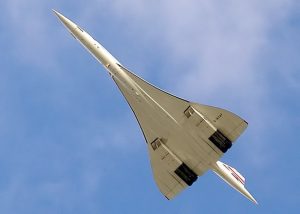
The airline industry is still roughly as slow, and noisy, and expensive, and inefficient and dirty as it has been for the last 40 years – and we haven’t seen much from the electric world yet to challenge it.
The trouble isn’t the motors. The problem lies with the batteries, their weight and their limited range. Now Luke Workman has worked on a novel battery design that he claims could revolutionize the way planes fly:
“Existing batteries carry a lot of extra weight in support materials,” he explains. About 35 per cent of the weight in the cell is current collection, sheets of aluminum and copper foil that are just there to get the energy in and out of the cell.”
That’s a lot of weight that’s not active material, he notes. “It’s a lot of weight a plane has to carry that’s not storing energy.”
What Workman proposes is to do away with the pouch cell design and instead use a gigantic, flat design approach, more in tune with the oversized wings of a supersonic plane.
Workman’s idea is to use the whole wing surface as part of a giant battery. Instead of conducting energy out through the tabs on top of the cells, Workman wants to sandwich huge sheets of active material together between super-thin double-sided foil layers – one side aluminum, the other copper. This way the entire cells are basically in contact with one another, conducting through their whole surface plane, instead of out through tabs.
“Composite structures, to be strong, need a middle portion there to support the skin on the outside,” says Workman, “We can use the battery as the middle layer of the wing, and we can use the aluminum skin of the wing as a current collector to get power from the ends of that battery sandwich out to the motors.”
Doing this for a small plane, a car or a motorcycle doesn’t make sense, but the maths start to work out when it comes to a Concorde-sized, big flat wing.
“From quick estimations based off existing cell materials that are safe and have high cycle life, you can get around 13,300 amp hours per 0.2 mm of thickness for each foil layer,” Workman contends. “Nine-hundred layers would give us 3.3 kV nominal and around 44 megawatt hours of battery storage.”
Total weight would be roughly 104,000kg, with an “extraordinarily high percentage” of that mass being active material, and lower conduction losses than any currently existing topology despite its high charge/discharge rate capabilities, Workman claims “That gives us 423 watt hours per kilo, well and truly in the ballpark, using proven materials we can get off the shelf today.”




